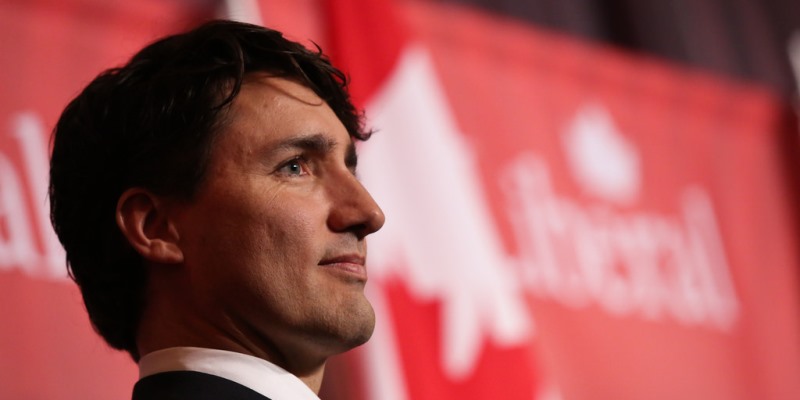Trudeau activist government produces red ink and alienation

As the dust settles from the federal election—which further exacerbated western frustration, if not outright separatist sentiments—it’s worth considering the policy ebbs and flows of the Liberal Party under Pierre Trudeau and his son Justin. Therein lies the explanation and solution to today’s rising tensions within Confederation.
Pierre Trudeau took over the Liberal Party from Lester Pearson and became prime minister in 1968, continuing Pearson’s policies of a more activist federal government. He expanded and reformed existing federal programs and introduced several new ones, and in doing so, oversaw an increase in federal per person spending (inflation-adjusted) from $4,022 when he became prime minister to $7,165 in 1984 when he retired from politics. This represents a 78.2 per cent increase in federal spending per Canadian.
The increase in federal spending was done largely by running deficits (i.e. borrowing). Under Trudeau the Elder, the federal deficit increased from essentially a balanced budget in 1969-70 to $32.4 billion in 1983-84. This more muscular federal government also gave rise to Quebec separatism (culminating in the 1980 referendum on separation) and growing western alienation, due in large part to Ottawa’s interventions in energy policy.
The Liberal Party then experienced a pronounced shift in policies under Prime Minister Jean Chrétien. After more than three decades of inaction on ever-increasing spending and rising deficits (and debt), the Liberals took bold action in 1995 to right the country’s finances. As then-finance minister Paul Martin said in his historic 1995 Budget speech: “We are acting on a new vision of the role of government in the economy. In many cases that means smaller government. In all cases it means smarter government.”
Budget 1995 set in motion reforms that would reduce federal program spending from $123.2 billion to $111.3 billion in 1996-97, resulting in the first budget surplus in more than three decades the following year. Federal government employment was also reduced.
The reforms also included a change in the way Ottawa provided money to the provinces for social programs, from a shared-cost model to a “block grant.” It also provided the provinces more flexibility and autonomy in designing and delivering government programs. As expected, and indeed as federalist countries are supposed to operate, the provinces experimented with different approaches to welfare and social programs with overwhelmingly positive results.
In many ways the policies of Prime Minister Justin Trudeau’s Liberal Party have reverted back in time to mirror those of his father. The federal government has markedly increased spending, despite the absence of a recession or military conflict. Indeed, at an expected level of $9,248 per person (inflation adjusted) in 2019, federal spending has never been higher, even during the recent recession ($8,777) and the Second World War ($7,582). Since Justin Trudeau entered office, per-person spending has increased by 17.5 per cent in just four years. And like under his father, much of the increase has been financed by borrowing. The deficit this year is expected to reach $20.0 billion and could grow significantly larger if a recession occurs.
Clearly, today’s Trudeau government has ignored the lessons from the Chretien government, which corrected the spending and deficits of Trudeau the Elder. Again, as Paul Martin once said: “The debt and deficit are not inventions of ideology. They are facts of arithmetic. The quicksand of compound interest is real.”
The return of an interventionist Ottawa has also rekindled tensions in Confederation. The separatist Bloc Quebecois won almost as many seats in Quebec (32) as the Liberals (35), and western alienation hasn’t been this prominent since Pierre Trudeau’s National Energy Program in the 1980s.
Unfortunately, our deteriorating federal finances and increasing regional tensions are an ominous throwback. The solution to these challenges lies in the successful reforms of the Chretien era. Federal decentralization and empowerment of the provinces, coupled with fiscal reform to put federal finances back on solid ground, would do much to reverse the worrying state of Confederation.
Authors:
Subscribe to the Fraser Institute
Get the latest news from the Fraser Institute on the latest research studies, news and events.

